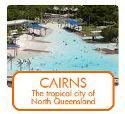While an Aussie Diver has survived an attack by the most savage predator in the world, our children may not be so lucky.
Child Safety and Protective Behaviours are not just about teaching personal safety from sexual predators, it is helping our children stay safe in all situations.
Water safety is important. The Queensland Government reports on drowning trends and states that:
- Child drownings in Queensland swimming pools accounts for one quarter of all paediatric injury deaths and is the most common cause of traumatic death for children aged one to four years.
- Approximately half of all drownings involving children under five years occurred in residential swimming pools. (Between 1992 and 2001, 73 children aged under five years died as a result of drowning in residential swimming pools in Queensland).
- For every child drowning, up to 14 children are taken to hospital emergency departments, and four are admitted to hospital.
- One study has found that 6 - 7% of these children will develop neurological deficits and will be permanently disabled or die as a consequence of nearly drowning.
- It is also estimated that for every child taken to hospital emergency departments, there are 10 'near misses' (ie. children suffering immersion who are quickly rescued).
The National Centre for Injury Prevention and Control stresses that:
- In 2003, there were 3,306 unintentional fatal drownings in the United States, averaging nine people per day. This figure does not include drownings in boating-related incidents (CDC 2005).
- For every child 14 years and younger who dies from drowning, five receive emergency department care for nonfatal submersion injuries. More than half of these children require hospitalization (CDC 2005). Nonfatal drownings can cause brain damage that result in long-term disabilities ranging from memory problems and learning disabilities to the permanent loss of basic functioning (i.e., permanent vegetative state).

For the vast majority of families, water safety translates to keeping your kids safe in the pool or at the beach. In the pool, don’t forget to Do the Five and keep our kids alive:
1. Fence the Pool
2. Shut the Gate
3. Teach Your Kids to Swim
4. Supervise
5. Learn Resuscitation
L. Look at the safety signs.
A. Ask a Lifesaver for advise.
G. Grab a friend to swim with you.
S. Stick your hand up for help.
How do you teach your children the importance of water safety?




 8:19 am
8:19 am
 Megan Bayliss
Megan Bayliss

 Posted in
Posted in 

No Response to "Water Safety."
Post a Comment